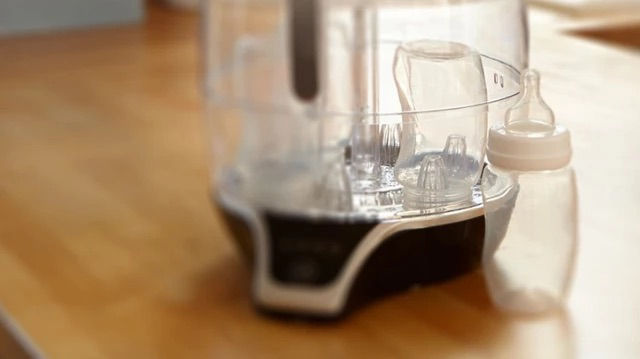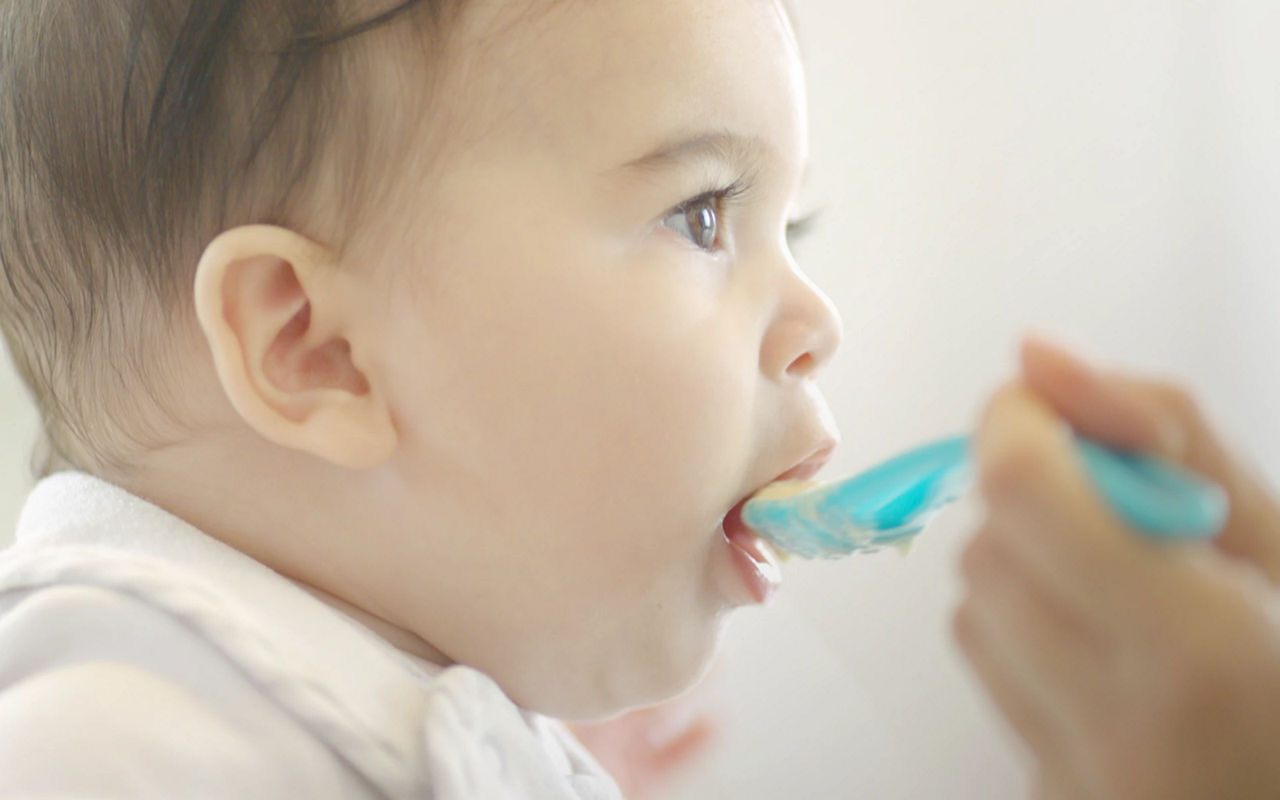By the time your baby has arrived, you and your partner may have already decided whether you’ll be breastfeeding, bottlefeeding, or a combination of the two. Whatever decision you make, there are always ways you can help – yes, even with breastfeeding.
Feeding choices
Time well spent
Helping your partner with breast or bottlefeeding

The options
When it comes to making feeding decisions, try to talk all the options through as a couple, and be supportive of your partner’s wishes – even if these change after birth.
There are three ways of feeding your baby:
- Breastfeeding
- Bottlefeeding
- Combination feeding
Breastfeeding is recommended as breast milk contains the essential nutrients, antibodies and prebiotics your baby needs.
 Breast milk contains the essential antibodies and prebiotics your baby needs.
Breast milk contains the essential antibodies and prebiotics your baby needs.
Breast is best
As the natural way of feeding, breast milk gives your baby the best start in life. Breast milk contains a combination of hormones, antibodies and prebiotics that help support their immune systems and promote healthy growth and development. You can find more information on the benefits of breastfeeding here.
Helping with breastfeeding
Although you aren’t the one producing milk, you can still do a lot to help with the breastfeeding routine. One option is for your partner to express her breast milk and store it in a sterilised bottle. That way, you’ll have it ready for feeding during the night or while your partner is getting some well-earned rest!
However, expressing isn’t an option for every woman, and it’s a good idea to leave it until your baby is around six to eight weeks old, as introducing a bottle too early can confuse them. When, and if, your partner can express, it’s a great way to get some quality bonding time with your new child. Watch our video guide to storing and expressing breast milk.
Helping with bottlefeeding
If you decide, or need, to bottlefeed your baby, there are lots of things to take into consideration. You’ll need to choose formula milk, look into ways of preparing feeds and sterilising equipment.
In hospital
Your first few feeds are likely to be in hospital, so it’s a good idea to check with your maternity ward whether they offer all the necessary equipment. If not, you and your partner should pack what you need in your hospital bag, along with your formula milk, so your baby won’t need to change milks after leaving hospital.

At home
There are lots of ways you can help with bottlefeeding:
- Sterilising bottles
- Preparing some of the feeds including getting the equipment ready
- Sharing night feeds between the two of you, either by splitting the night up (e.g. bedtime–03.00 and 03.00–08.00), or alternating the feeds. Earplugs can be handy for whoever’s off duty
- Helping periodically throughout the day to give your partner some rest.
Sometimes babies will take time to adjust to being fed by someone new, so don’t be upset if it takes a while for them to get used to it. You’ll soon realise that the time you spend feeding your baby is precious bonding time.
Combination feeding
Some women find it difficult to exclusively breastfeed and may need to combine bottlefeeding with breastfeeding. This helps ensure your baby gets the goodness they need from breast milk, and can be helpful for women who struggle to solely breastfeed. Just be aware, it is usually recommended that your partner breastfeeds for at least six to eight weeks before introducing a bottle. This will reduce the chance of your baby developing a preference for bottlefeeding.
Introducing combination feeding
If you need to combination feed, it’s best to introduce it gradually – this ensures your partner’s breasts don’t leak or become engorged. Dropping one feed a week at first will give her breasts some time to adjust. Here are a few more tips to help you both in the early stages:
- Develop a routine with your partner so you can all adjust and get used to it
- Try different teats – latex is the closest to breast, so your baby may find it easier to adjust to
- Warm the milk before feeding
- Try bottlefeeding when your partner’s not in the room; your baby will be able to smell her breast milk if she is close by
- Try holding your baby facing away from you, propped up against your front
It can take some time for your partner and baby to get used to combination feeding, so try to be patient and don’t be discouraged if they don’t take to it straight away.
Next steps
- Talk to your partner about her preferred feeding method.
- If your partner plans to breastfeed, you may want to invest in some essentials, such as nursing bras, a breastfeeding pillow, breast pump, bottles, and a lanolin nipple cream to soothe and protect her nipples.
- If you decide to bottlefeed, start preparing by choosing a baby milk and buying the required equipment, such as a steriliser, bottles, teats and a bottle brush.
- And if you need to combination feed, you will want to invest in all of the above!
- Watch our video guides to sterilising bottles and preparing a bottlefeed so you know what you’re doing.
More from our experts

Get in touch with our Careline experts
Our nutritionists and feeding advisors are always on hand to talk about feeding your baby. So if you have a question, just get in touch



